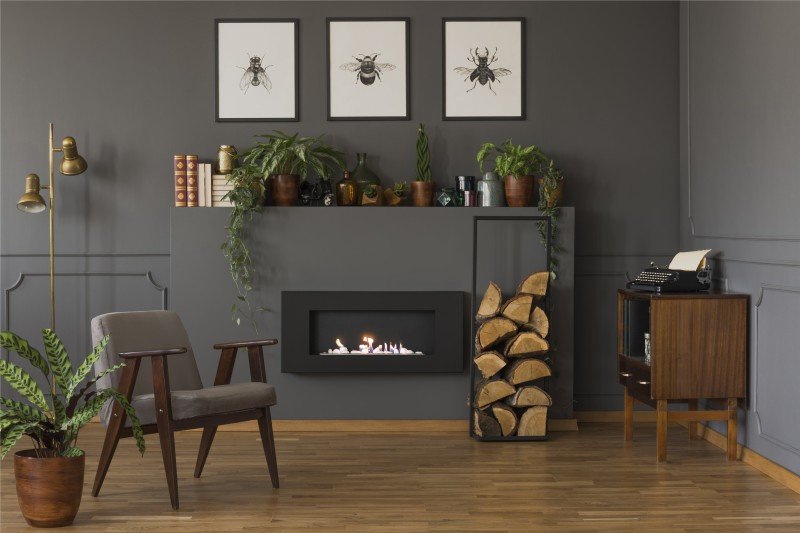How To Solve Issues With Fireplace
The Charm and Functionality of Fireplaces: A Comprehensive Guide
Fireplaces have long been a main function in homes, symbolizing warmth, friendship, and comfort. They come in various styles, products, and fuel types, accommodating the preferences and requirements of varied property owners. This article looks into the diverse world of fireplaces, exploring their history, types, installation considerations, and maintenance pointers, while supplying FAQs to address typical inquiries.
A Brief History of Fireplaces
Historically, fireplaces worked as the cornerstone for cooking and heating homes. In ancient times, an open hearth was often positioned in the center of a home. Over centuries, architectural advancements facilitated the development of more advanced styles, evolving from simple stone structures to elaborate mantels that administer over modern living spaces.
Secret Historical Milestones:
- Ancient Times: Open fires in caverns and primitive huts for warmth and cooking.
- Middle Ages: Large, typically centralized chimney structures in terrific halls of castles.
- Renaissance: Decorative mantels and styles gain popularity, with the fireplace ending up being a symbol of wealth and status.
- Industrial Revolution: Advancements in materials and making permit a more comprehensive variety of fireplace styles.
- Modern Era: Gas and electric fireplaces end up being commonplace, permitting increased benefit and security.
Types of Fireplaces
Today, various types of fireplaces are readily available, each with its special qualities. Below is a breakdown of the most typical types:
Fireplace Type
Description
Pros
Cons
Wood-Burning
Traditional fireplaces sustained by wood.
Authentic experience, heat output.
Labor-intensive, requires proper venting/maintenance.
Gas
Fireplaces that use natural gas or gas.
Easy to use and keep.
Less atmosphere compared to wood.
Electric
Uses electrical energy to generate heat and flames.
Safe, no venting required.
Restricted heat output, greater energy costs.
Bioethanol
Utilizes bioethanol fuel, producing clean flames.
Environmentally friendly, portable.
Needs routine refueling.
Pellet
Uses compressed wood pellets as fuel.
Tidy burning, sustainable.
Requires power for operation.
Extra Considerations
When choosing a fireplace, it is vital to think about factors such as:
- Fuel Availability: Consider what fuels are easily accessible in your location.
- Area and Aesthetics: The size of your living location and your style choices must guide your option.
- Building Regulations: Always consult local guidelines to ensure compliance and security.
Installation Considerations
Installing a fireplace involves more than simply placing a structure in your house. Extensive preparation, professional input, and adherence to safety codes are vital. Here are some critical steps:
- Planning: Consider the size and type of fireplace, where it will be put, and its designated usage.
- Consultation: Hire a certified specialist to examine your home and make sure appropriate installation.
- Permits: Obtain any required building permits from local authorities.
- Products: Select appropriate products for the fireplace and surrounding area. Ensure they are fire-resistant and developed for your fuel type.
Maintenance Tips for Fireplaces
Routine maintenance ensures your fireplace operates securely and efficiently. Here are vital upkeep tips classified by fireplace type:
Wood-Burning Fireplaces
- Chimney Cleaning: Have your chimney cleaned each year to avoid creosote buildup.
- Check for Damage: Check for fractures and damage to the firebox and chimney structure.
- Firewood Storage: Store firewood far from your house to prevent bug invasions.
Gas Fireplaces
- Log Inspection: Regularly examine ceramic logs for cracks and replace if needed.
- Vent Cleaning: Ensure that vents are devoid of blockages.
- Pilot Light Check: Test pilot lights and ignition systems frequently.
Electric Fireplaces
- Cord Inspection: Frequently inspect electrical cables for fraying or use.
- Clean Surfaces: Wipe down surfaces routinely to remove dust and particles.
- Smoke Detectors: Ensure smoke detectors in the vicinity are functional.
Bioethanol and Pellet Fireplaces
- Fuel Storage: Store fuels in a cool, dry location away from direct sunshine.
- Regular Refueling: Monitor fuel levels and refuel as required.
- Ventilation: Ensure appropriate ventilation when using these fireplaces.
FAQs About Fireplaces
Q1: Do I require an authorization to install a fireplace?
Yes, a lot of towns need authorizations for fireplace installations to ensure safety and compliance with regional building regulations.
Q2: How typically should I clean my chimney?
It is suggested to have your chimney cleaned a minimum of when a year, especially if you use your fireplace frequently.
Q3: Can I convert a wood-burning fireplace to gas?
Yes, lots of homeowners convert wood-burning fireplaces to gas for convenience, however speaking with an expert is advisable to ensure a correct conversion.
Q4: Do electric fireplaces produce heat?
Yes, electric fireplaces can produce heat; however, their main function is typically for atmosphere, making them an appropriate option for those who want a fire look without extensive heating.
Q5: Are bioethanol fireplaces safe?
Bioethanol fireplaces are normally safe when utilized correctly; however, they require correct ventilation, and users need to follow all producer standards.
Fireplaces not just add visual attract homes but likewise provide useful heating services. With find out here now , styles, and maintenance requirements, homeowners can make educated options that best fit their requirements and way of lives. Whether selecting the charm of a wood-burning fireplace or the convenience of a gas model, a fireplace can significantly improve a living space's comfort and environment. As the hearth stays a focal point in homes, it continues to promote warmth, discussion, and connections amongst friends and family.
